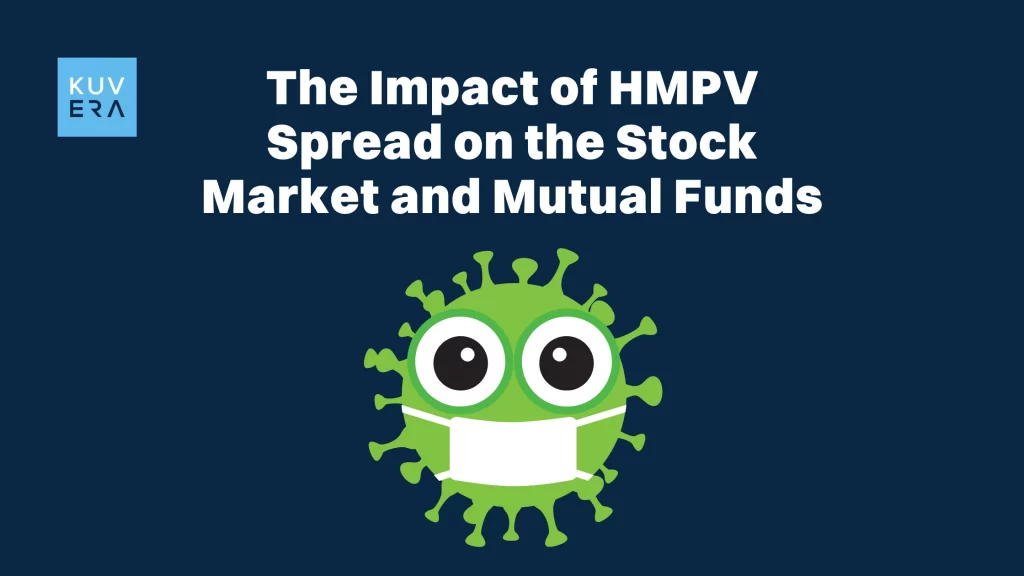On January 6, 2025, India’s financial markets experienced a significant downturn, primarily attributed to concerns over the Human Metapneumovirus (HMPV) following the detection of cases in Bengaluru and Gujarat. The BSE Sensex plummeted by 1,258.12 points (1.59%) to close at 77,964.99, while the NSE Nifty declined by 388.70 points (1.62%) to settle at 23,616.05. This sharp decline resulted in investors losing over ₹12 lakh crore in a single session.
The market’s reaction was driven by fears that the HMPV outbreak could lead to disruptions similar to those caused by previous pandemics, potentially affecting business operations and economic activities. This uncertainty prompted a broad-based sell-off across various sectors. Notably, the Nifty PSU Bank index fell by 4%, with significant declines in stocks like Union Bank of India (down 7.8%) and Bank of Baroda (down 5.85%). Other sectors, including metals, real estate, oil and gas, and financials, also witnessed substantial losses.
Sectoral Analysis
1. Hospitality and Aviation
(a) Indian Hotels Company Ltd: Stock fell by approximately 6.4%.
(b) InterGlobe Aviation (IndiGo): Shares declined by about 5.6%. These sectors faced heightened losses due to anticipated declines in travel and tourism.
2. Healthcare
(a) Narayana Hrudayalaya: Stock rose by 3.4%.
(b) Rainbow Children’s Medicare: Increased by 4%.
The sectoral analysis indicates that investors quickly shifted to healthcare stocks, anticipating increased demand for medical services in response to the outbreak.
Additionally, Foreign Institutional Investors (FIIs) contributed to the market downturn by selling off holdings, with a net outflow of ₹4,227.25 crore on January 3, 2025. This selling pressure, combined with a weakening Indian rupee and negative global cues, exacerbated the decline. Concerns over the U.S. Federal Reserve’s hawkish stance on future rate cuts and potential upward revisions for 2025 inflation added to investor apprehension.
Mutual Funds Impact
Mutual funds reflect broader market movements, making them sensitive to periods of economic distress. As such, the HMPV news had a noticeable impact on mutual fund investments:
1. Equity-Oriented Funds
Large-cap equity funds lost an average of 6% in NAVs last month, driven by sharp corrections in blue-chip stocks (Morningstar). Mid- and small-cap funds also experienced higher volatility.
2. Debt Funds
Debt funds have recently provided an average return of 1.2%. Corporate bonds and government securities cushioned portfolios from equity market volatility.
3. Hybrid Funds
Balanced funds, which mix equity and debt, showed a moderate decline of 3.5%, underscoring their role as a less volatile option for cautious investors.
A diversified mutual fund approach with a balanced portfolio across various sectors might be better positioned to withstand downturns during high market volatility.
Market experts suggest investors to remain cautious but not panic. Ajay Bagga, a market and banking expert, noted that the market’s decline was due to a combination of factors, including the emergence of HMPV cases, a slowing Indian economy, muted corporate earnings growth, and global pressures from a strong U.S. dollar and high U.S. yields. Vinod Nair, Head of Research at Geojit Financial Services, highlighted that emerging markets are undergoing consolidation due to uncertainties surrounding new U.S. economic policies and the Federal Reserve’s stance on future rate cuts.
Gold and Silver Price Movements
During periods of market uncertainty, such as the recent downturn triggered by concerns over the Human Metapneumovirus (HMPV), investors often turn to precious metals like gold and silver as safe-haven assets. This shift in investment preference has influenced the prices of these commodities.
In early January 2025, gold prices in India experienced fluctuations. On January 6, 2025, the price of 24-carat gold in Mumbai declined by ₹300 to ₹77,300 per 10 grams. By January 14, 2025, the price had risen to ₹80,253 per 10 grams in Delhi, reflecting an increase of ₹440 from the previous day (mint). Silver prices also saw movements during this period. On January 6, 2025, silver was priced at ₹90,450 per kilogram in Mumbai. By January 14, 2025, the price had increased to ₹97,700 per kilogram in Delhi, indicating a rise of ₹1,200 from the previous day.
Further, spot gold prices surged 1.8% recently, reaching $2,675.49 per ounce (Reuters), and Gold ETFs saw record inflows of $2.1 billion, signalling a shift in investor sentiment toward stability. Silver outperformed gold with a 3.2% weekly increase, reaching $28.50 per ounce. Its dual role as an industrial and precious metal has boosted demand amid supply chain disruptions.
Systematic Investment Plans (SIPs) and Tax-Saving Investments
Amid high market volatility, the importance of continuing Systematic Investment Plans (SIPs) (mutual fund investment) is crucial because SIPs help investors navigate market fluctuations by investing fixed amounts at regular intervals. Some advantages of SIPs include:
1. Rupee Cost Averaging
Mutual funds, particularly when accessed through SIPs, inherently provide the benefit of cost averaging. During market downturns, the fixed investment amount buys more units due to lower prices. For example, if an investor allocates ₹10,000 monthly to a mutual fund and the Net Asset Value (NAV) drops from ₹50 to ₹40, the number of units purchased increases from 200 to 250. This accumulation of more units at lower prices can lead to substantial gains when the market rebounds.
2. Discipline and Consistency
SIPs promote disciplined investing, encouraging investors to remain committed to their financial goals without being swayed by short-term market fluctuations.
3. Compounding Benefits
Regular investments benefit from the power of compounding, where returns generate their own returns, leading to exponential growth over time.
Tax-saving investments can further turn market downturns into opportunities for maximizing the advantages of investment vehicles like Equity-Linked Savings Schemes (ELSS). The advantages are:
1. Net Asset Value (NAV) Advantage
ELSS funds are available at discounted NAVs, allowing investors to acquire more units.
2. Tax Benefits
Investments up to ₹1.5 lakh under Section 80C of the Income Tax Act (old regime) reduce taxable income.
Wrapping Up
To wrap up, while the immediate market reaction to the HMPV news has been negative, the long-term impact will depend on the virus’s spread and the effectiveness of containment measures. The January 2025 HMPV status underscores the vulnerability of financial markets to health crises. However, disciplined, informed investing can turn challenges into opportunities. Key strategies for navigating such crises include:
- Staying invested to benefit from eventual recoveries.
- Utilising rupee cost averaging to acquire more units at lower costs.
- Diversifying portfolios with equities, debt, and precious metals.
- Leveraging tax-saving investments in ELSS funds.
Investing during crises requires patience and a long-term perspective. By adhering to these principles, you can protect wealth and position yourself for substantial growth when markets recover.
One significant way to manage this kind of market uncertainties is staying invested for the long-run through your mutual fund SIPs.
Interested in how we think about the markets?
Read more: Zen And The Art Of Investing
Watch here: Rebalancing for Mutual Fund Investors

